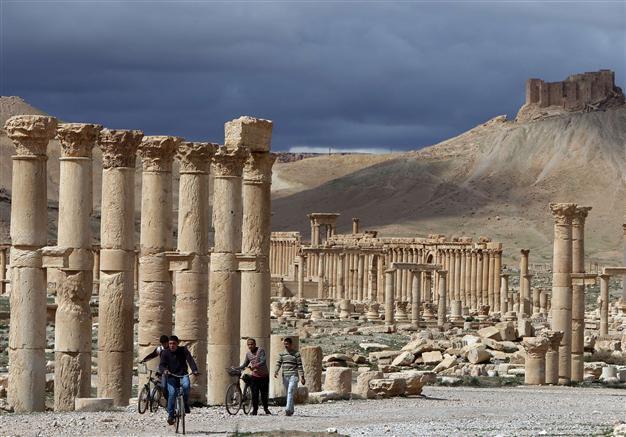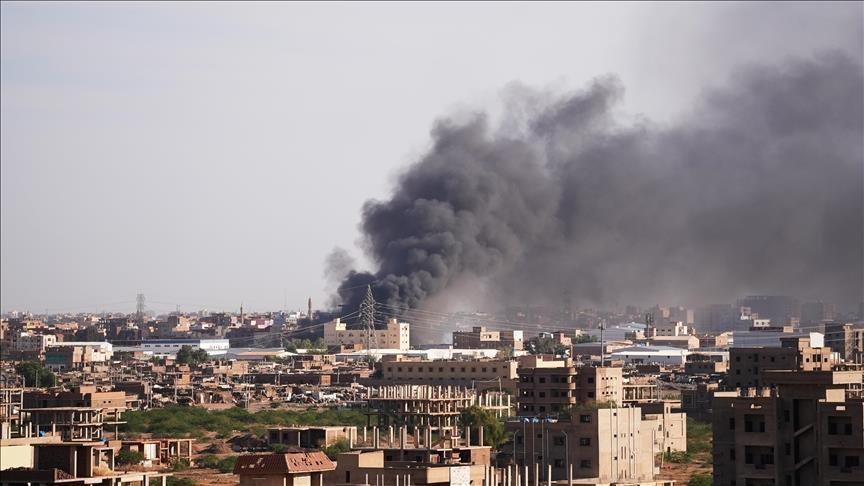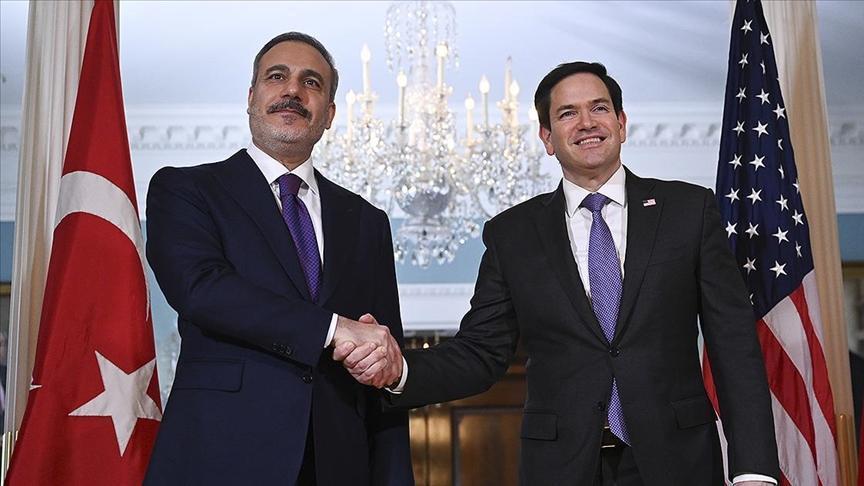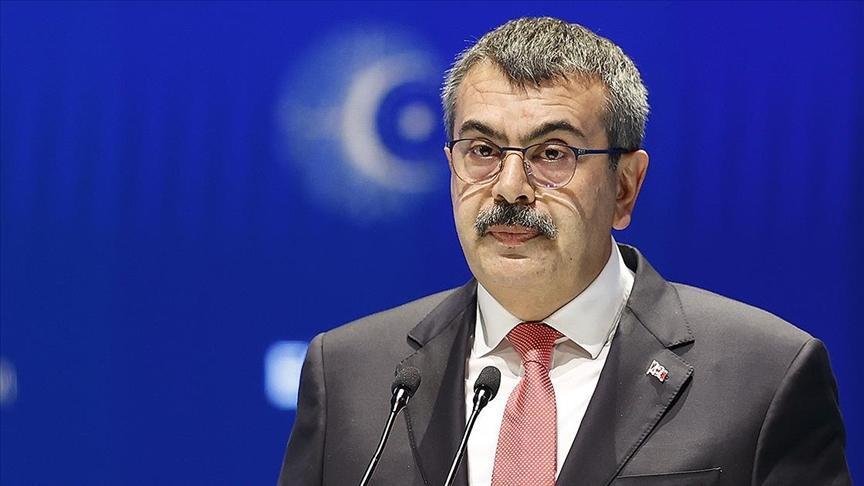Syria's Palmyra in peril after ISIL overruns most of city
DAMASCUS - Agence France-Presse

A file picture taken on March 14, 2014 shows Syrian citizens riding their bicycles the ancient oasis city of Palmyra, 215 kilometres northeast of Damascus. AFP Photo
Islamic State of Iraq and the Levant (ISIL) fighters overran most of the historic Syrian city of Palmyra on May 20, in a blow to efforts to repel the advancing jihadists after the fall of Iraq's Ramadi.The jihadists, notorious for demolishing archaeological treasures since declaring a "caliphate" last year straddling Iraq and Syria, appeared to have fought their way into Palmyra on foot after breaking through in the city's north.
It was unclear if they had reached Palmyra's UNESCO-listed heritage site, including ancient temples and colonnaded streets, and its adjacent museum housing priceless artefacts located in the city's southwest.
"IS [ISIL] controls almost all of Palmyra" after government troops withdrew from everywhere except a prison in the east and military intelligence headquarters in the west, said Rami Abdel Rahman of the Syrian Observatory for Human Rights.
An activist originally from Palmyra, Mohamed Hassan al-Homsi, said that "a large number of regime forces were seen gathering near the military intelligence branch and withdrawing".
Government warplanes responded by carrying out air strikes on ISIL positions in the city.
The assault on Palmyra came days after the militants took the Iraqi city of Ramadi, their most significant victory since mid-2014 when they conquered swathes of land, sparking a US-led air campaign to support Baghdad.
A US State Department official said the loss of Ramadi would force Washington to take an "extremely hard look" at its strategy against IS.
The jihadists sparked international outrage this year when they blew up the ancient Assyrian city of Nimrud and smashed artefacts in the museum of Mosul, both in Iraq.
"The situation is very bad," Syria's antiquities chief, Mamoun Abdulkarim, said after ISIL captured a northern section of the city earlier in the day.
"If only five members of IS [ISIL] go into the ancient buildings, they'll destroy everything," he added, calling for international action to save the city.
Hundreds of statues and artefacts from Palmyra's museum have been transferred out of the city, according to Abdulkarim, but many others -- including massive tombs -- could not be moved.
Asked if IS [ISIL] would be able to reach Palmyra's ruins, a Syrian military source said "everything is possible".
In neighbouring Iraq, IS [ISIL] consolidated its hold on Ramadi, capital of Anbar province, just 100 kilometres (60 miles) west of the capital.
On May 20, the Anbar police chief was dismissed, after video footage emerged online suggesting security personnel deserted their posts at the height of the ISIL offensive.
The militants' gains have sparked international concerns, with France pledging May 20 to host high-level international talks next month in Paris over the threat posed by ISIL.
Middle East expert Hassan Hassan, writing in the Foreign Policy magazine, warned the fall of the Ramadi "marks a dangerous new phase of the war" and would have a "ripple effect across both the Syrian and Iraqi battlefields".
The US official said Washington would step up its aid to Iraq, including sending 1,000 anti-tank missile systems to help stop suicide car bombs and accelerating its training and equipping of tribal forces to fight ISIL.
"You'd have to be delusional not to take something like this and say: 'What went wrong, how do you fix it and how do we correct course to go from here?'," the official told reporters.
Asking not to be identified, the official highlighted the IS tactic of ploughing huge "vehicle-born improvised explosive devices" (VBIEDs) into buildings and walls.
In Ramadi, an explosives-packed bulldozer was used to blow up the security perimeter around a government-held compound.
Around 30 vehicles such as Humvees then flowed in, 10 of which were carrying enough bomb-making materials to carry out explosions the size of the blast of the 1995 Oklahoma City bombing.
Besides the more than 3,000 air strikes carried out so far, Washington has supported a deep reform of Iraq's army and offered training to Sunni tribesmen.
But that failed to prevent the loss of Ramadi, where militias backed by US arch-foe Iran will now take the lead in any counter-attack.
During a visit to Baghdad on May 20, Iranian Defence Minister Hossein Dehghan stressed Tehran's commitment to Iraqi unity but also emphasised Iran's role in the fight against ISIL.
According to officials from Anbar, at least 500 people were killed in three days of fighting in Ramadi during which ISIL used waves of suicide car bombs.
The army's retreat was chaotic, once again raising questions over the credibility of Iraq's regular forces.
Tens of thousands were forced to flee their homes in the process.
And on May 20, more than 2,000 were able to join them and escape conflict-torn Anbar after the authorities opened a bridge that had been closed for three days.
















